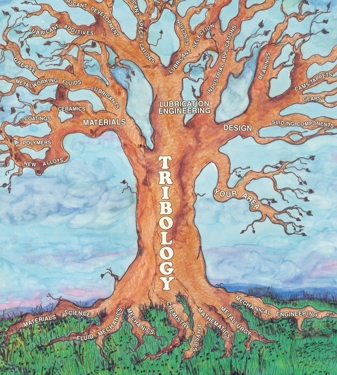|
In 1966, a report published by the UK
Department of Education and Science introduced the concept of
tribology, which was defined as the science of interacting surfaces in
relative motion. Tribology, as a “new science” studies friction, wear, and
lubrication. These three processes affect each other with interacting
causes and effects: tribology is the study of them as they interact. The term tribology comes
from Greek words tribos meaning rubbing or sliding and
logos meaning science. After an initial period of scepticism,
as is inevitable for any newly introduced word or concept, the word
“tribology” has gained gradual acceptance. As the word tribology is
relatively new, its meaning is still unclear to the wider community and
humorous comparisons with tribes or
tribolites tend to persist as soon as the word “tribology” is
mentioned.
The tribology is one of the many new
technical disciplines whose development has a great influence on the
reliability and life of mechanical systems. Interdisciplinary character of
the tribology and presence of tribological processes in most of mechanical
systems demand researches in all fields of industry. This is especially
important in transportation, machine production industry, ferrous and
non-ferrous metallurgy and power plants,
where these tribological activities achieve significant technical and
economical effects. The great losses in industry and transportation
because of friction and especially wear of the material are the best
stimulation for tribology development. The biggest contribution of the
tribology is noticeable in materials, design of machine elements and
systems and their maintenance.
Tribological constraints are not
confined only to mechanical equipment. Computers and electronic equipment
are also a fertile source of tribological problems yet to be solved. A
major limitation of data transmission is that for data transfer from a
memory disk to a recording head, sliding contact must occur between the
disk and the head. If there is, however, true solid to solid contact
between these two parts then transferred data will be affected and
degraded by wear damage. The human body itself is also prone to friction
and wear problems. The human joints are perfect bearings lubricated by
synovial fluid and operating
usually without failure for a very long time. In a healthy human joint, an
extremely low coefficient of friction is maintained, values as low as
0.005 have been measured. It has also been shown that the synovial fluid
effectively prevents contact between the joint surfaces. However, when
rheumatism and in particular arthritis occurs fragments of cartilage and
bone are observed in the synovial fluid. These particles are wear
particles generated during the operation of the joint, and like other wear
particles could induce serious damages. |

Tribology tree |